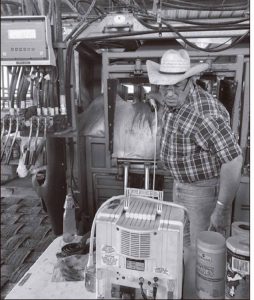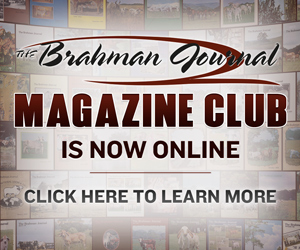By Todd Schindler, ABBA Research and Breed Improvement Committee Chairman.
In the past Brahman and Brahman influenced bulls and steers have taken a hit at local livestock auctions, partially due to perceived lack of carcass traits, namely IMF/Marbling. In order for our breed to correct this, we need to start improving IMF. To improve, we must first see where we are by collecting data.

Currently, the two most common practices available to Brahman breeders for collecting data are entering cattle in the Brahman Association EAR program and the use of ultrasound. Entering steers in the EAR program is the most reliable, but also can be the most time consuming and costly. Ultrasound costs less and allows you to receive data sooner. There have been issues with scanning Brahman cattle, but the accuracy is quickly improving.
If you have decided to ultrasound your calves/yearling Brahmans I thought it would be good to review a few things you need to know about the process.
AGE TO ULTRASOUND: The Brahman Association only accepts data for animals (bulls, heifers, or steers) aged 10 to 16 months.
DATA THAT IS COLLECTED: IMF/Marbling, Ribeye Area, Rib Fat Thickness, and Rump Fat Thickness.
REPORTING DATA TO THE ABBA: Reporting data is recommended, but not required. In order for data to be used in your EPD’s you must have the animal’s registration number and the animal must be part of a contemporary group of at least three. A contemporary group is a group that is similar in age and raised under the same conditions. The weaning date and weaning weight must be recorded with the registry/association.
GENERAL TIME LINE AND SUGGESTIONS FOR ULTRASOUNDING:
1. Wean calves and collect weaning weights.
2. Raise calves as you wish up to the ultrasound event. The manner in which you feed your cattle will be provided to the ultrasound technician. This information will be taken into consideration in the adjusted scan data. Examples of types of feeding schedules:
a. All grass/hay
b. Less than 50% is feed / more than 50% grass/hay.
c. More than 50% is feed / less than 50% grass/hay.
d. Full feed
3. Animals must be weighed the day before, or day of, the ultrasound. I recommend you create a document containing the weights, private herd numbers and ABBA registration numbers. This is especially important if you will send your data to the ABBA and want the data to be entered for EPD’s.
4. Keep the cattle as calm as you can. It is felt that stress can have a negative effect on IMF.
5. Have the location of ultrasound set up for the technician with the following:
a. Squeeze chute
b. Contained area next to the squeeze chute to keep the ultrasound equipment safe from harm by weather and/or animals.
c. Electricity. If you don’t have electricity make sure you or the technician has a portable generator.
d. Protection from the weather and/or bright sun.
6. Let the technician know if the ultrasound results need to be sent to you or to the ABBA.
Typically the technician can give you a general idea if the scan “looks good” or “looks bad”, but the official numbers must be sent to a CUP certified lab. The CUP lab will read the scans, plug in age, sex, feed program, breed, etc. and issue their findings to you and/or the ABBA. The staff at the ABBA will enter the data into the registry taking into consideration the factors listed above.
It is important to book your technician well in advance. Technicians can be hard to schedule. If you are looking for an ultrasound technician you can start at www.cuplab.com.
In closing I have a suggestion in the event you are unhappy with the results, “DO NOT WRECK YOUR HERD!” Instead, look at the traits that are important to you. Determine the average for your tested animals, and start cutting out the bottom, or lesser cattle, from your herd. It will serve you well.














